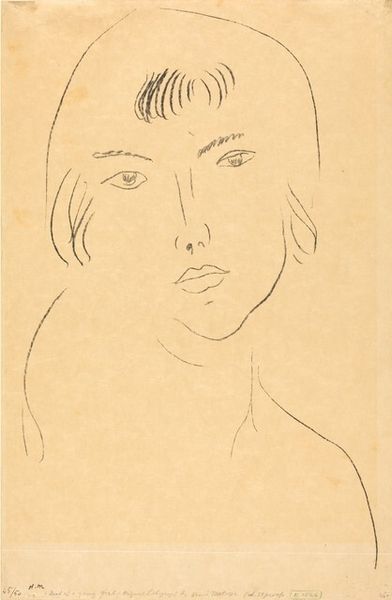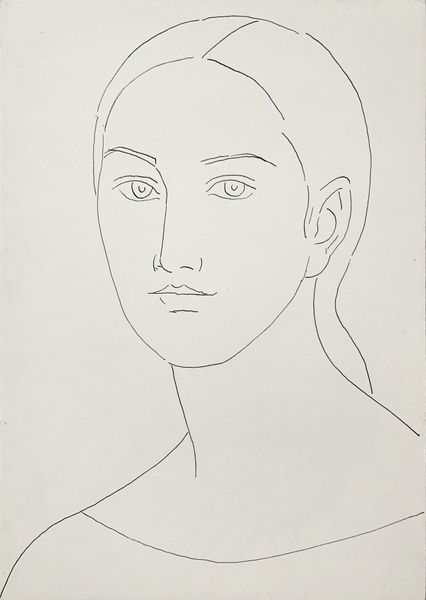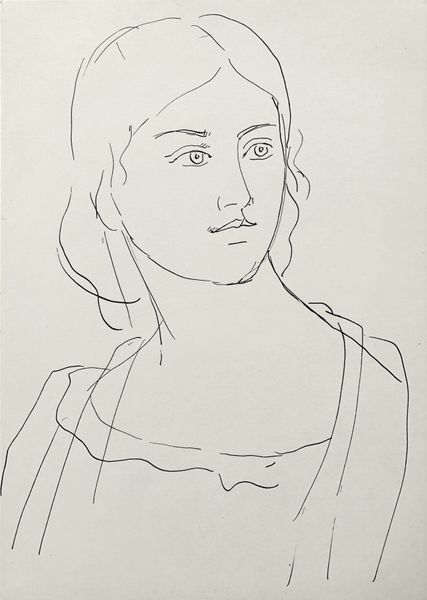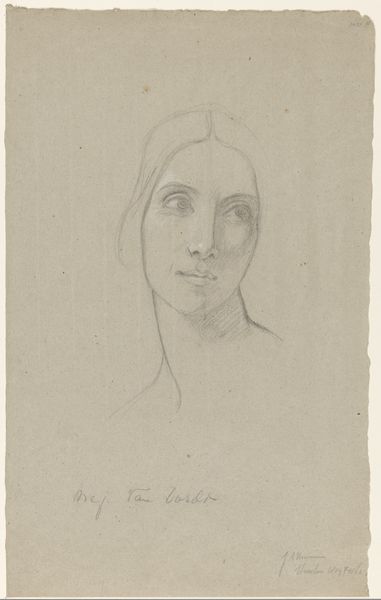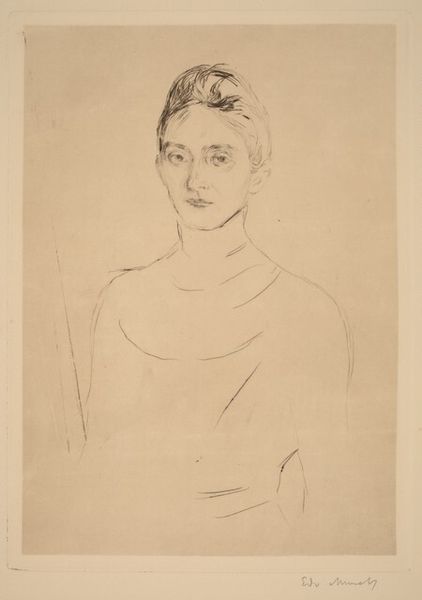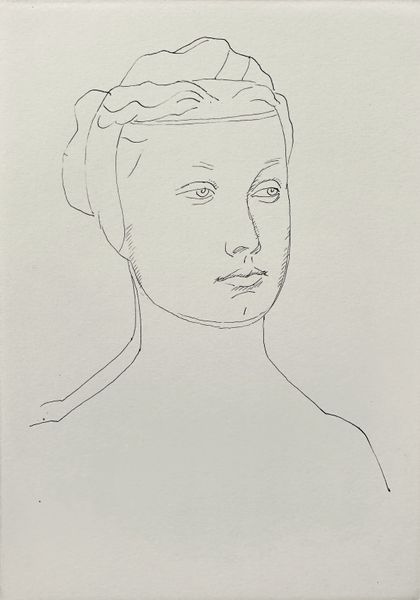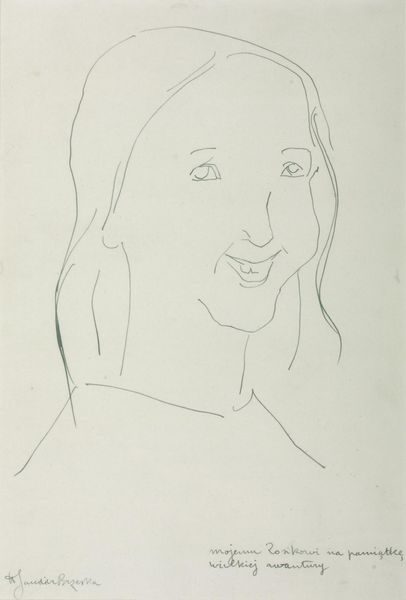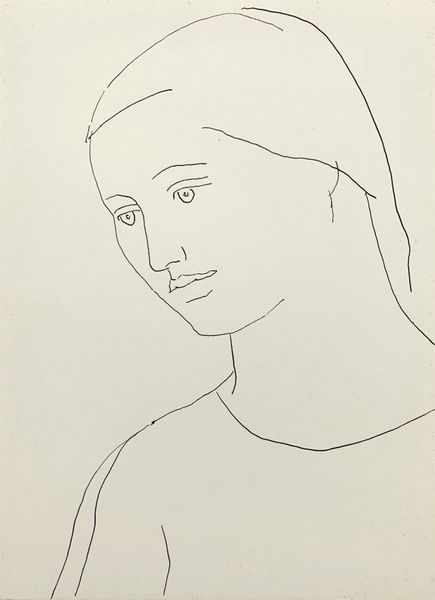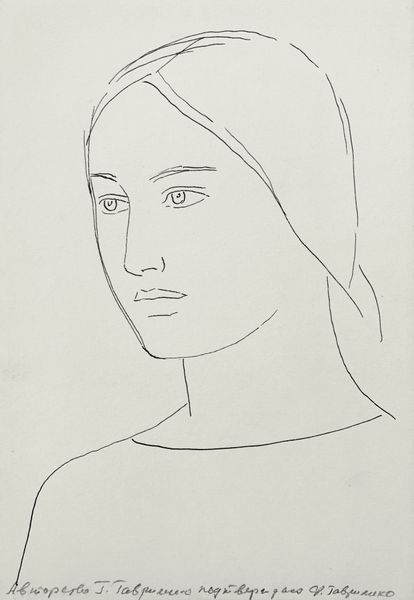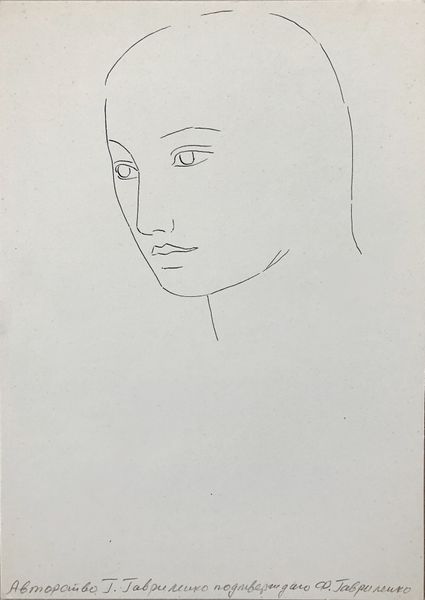
drawing, print, etching, dry-media
#
drawing
# print
#
etching
#
pencil sketch
#
german-expressionism
#
dry-media
#
portrait drawing
Copyright: National Gallery of Art: CC0 1.0
Editor: This is "Young Girl" by Emil Nolde, created in 1922. It's an etching, and I find the delicate lines create a somewhat vulnerable portrayal. How would you interpret this work? Curator: From a materialist perspective, the etching process itself is crucial. Think about the labour involved in preparing the plate, the application of acid, the printing – it's not just about the image, but the entire production process. How does the mass production capability of printmaking factor into who would own and interact with an image like this? Editor: That's interesting! I hadn't considered the implications of it being a print. So, the potential for wider distribution impacts its meaning? Curator: Precisely. Etchings allowed artists to create multiples, potentially reaching a broader audience beyond the traditional elite. Nolde was part of the German Expressionist movement. Consider how Expressionism often depicted societal anxieties and alienation through distorted forms and bold lines. How might this connect with the industrial revolution's impact? Editor: I guess mass production made some people rich, but changed labour beyond recognition, perhaps alienating many more from work they took pride in... something visible even in the simplest images? Curator: Exactly. Furthermore, examine the materials used: metal, acid, ink, paper. Each has its own history, its own social and economic context. Are there similar themes echoed in Nolde’s other works or writings from that time period? Editor: That's a perspective shift for me – focusing less on *who* is depicted and more on *how* and *why* the depiction happened. I'll definitely be thinking more about the labour and materiality behind art in the future! Curator: Wonderful. Considering the historical processes of creation truly enriches our interpretation and challenges us to think about art’s place in society.
Comments
No comments
Be the first to comment and join the conversation on the ultimate creative platform.
